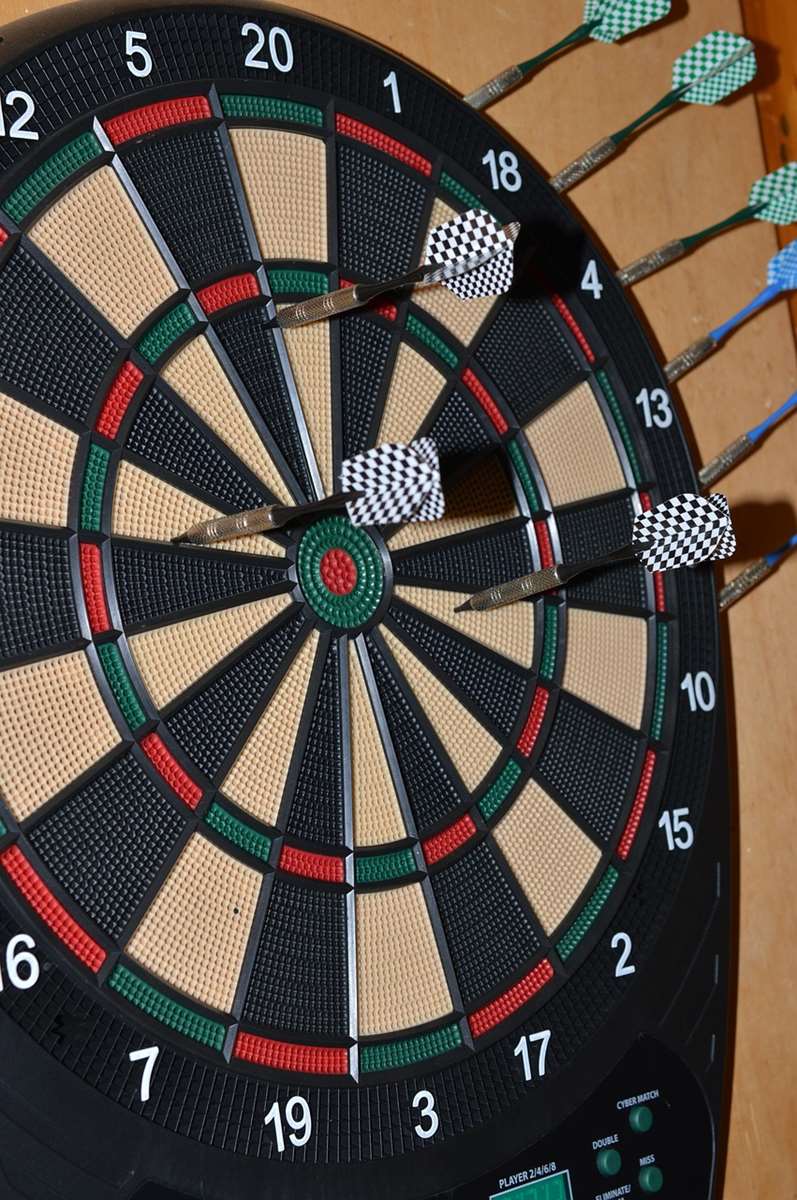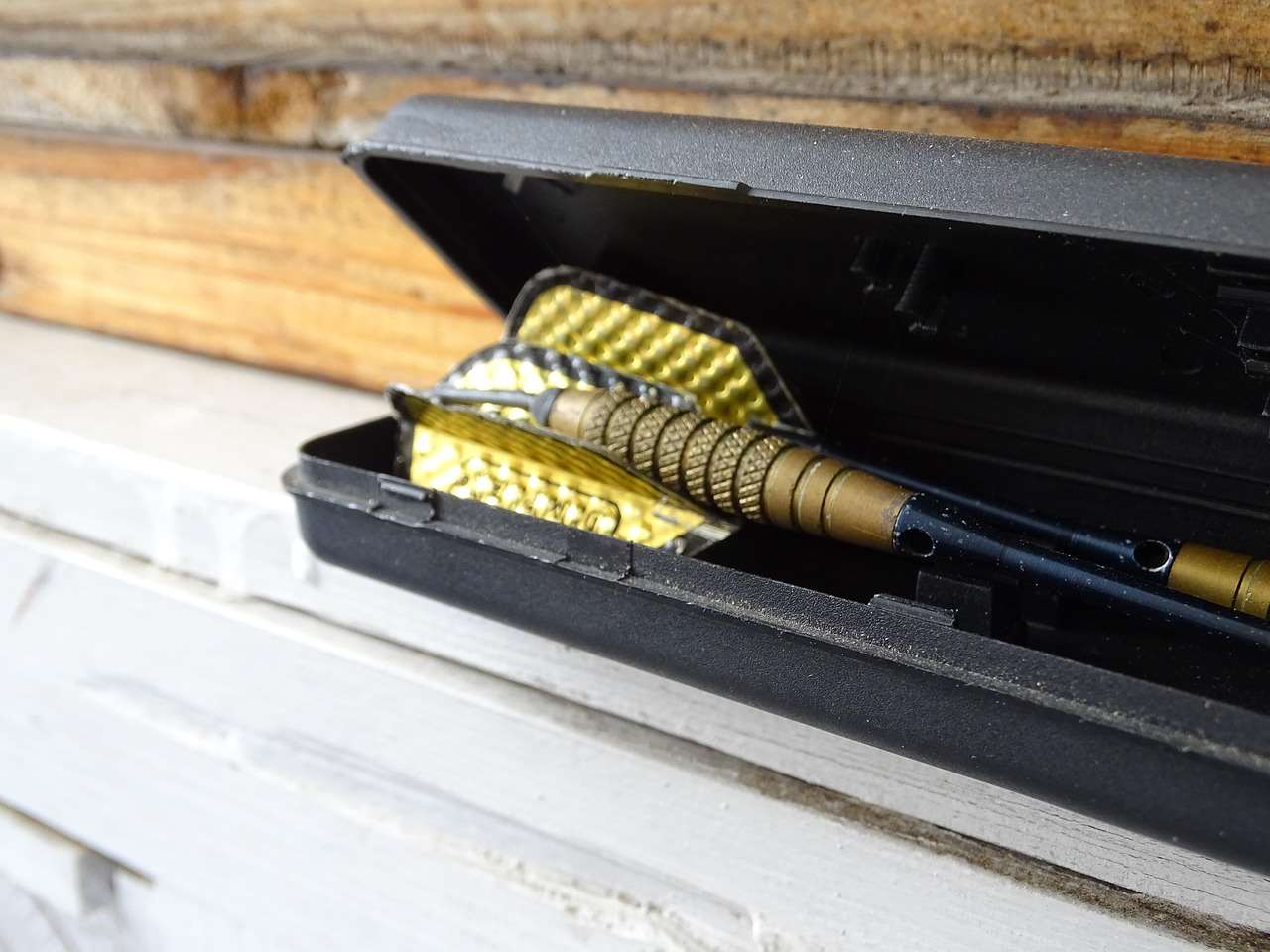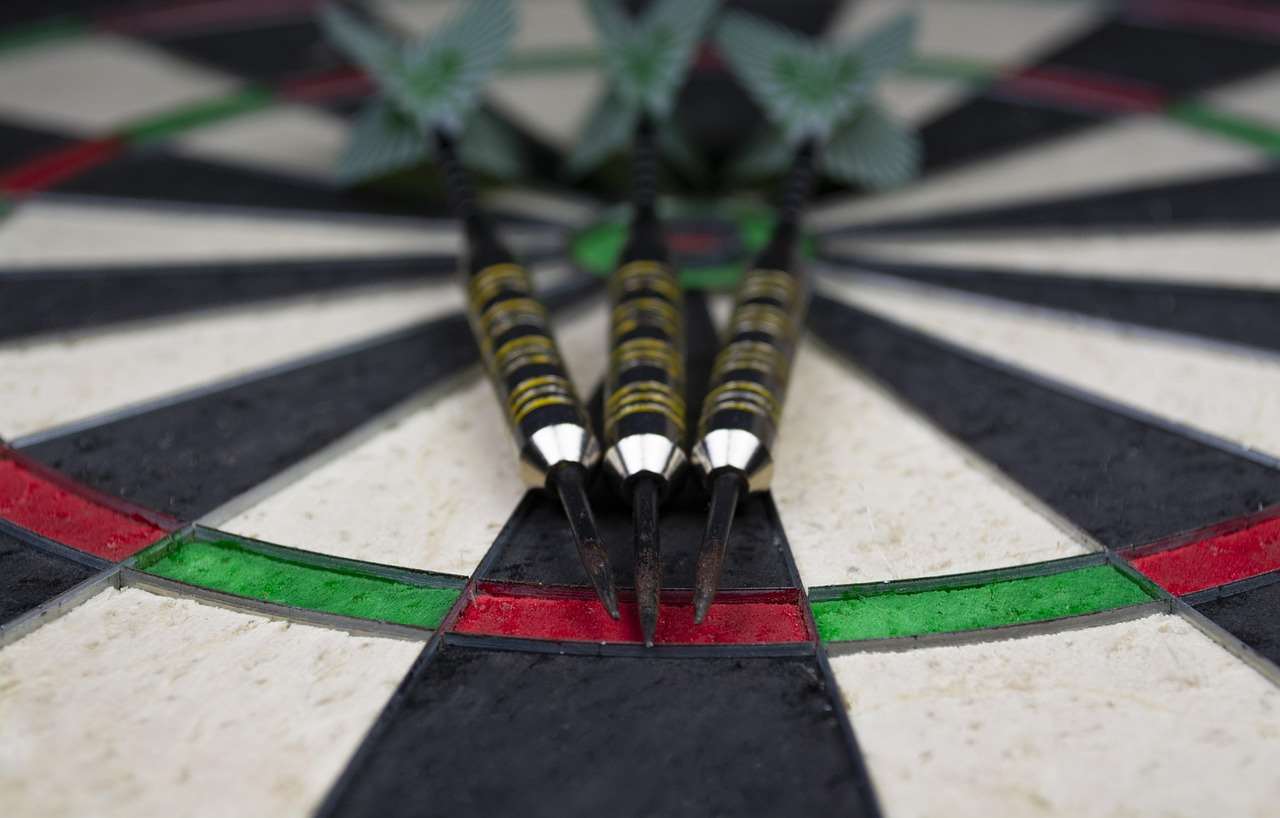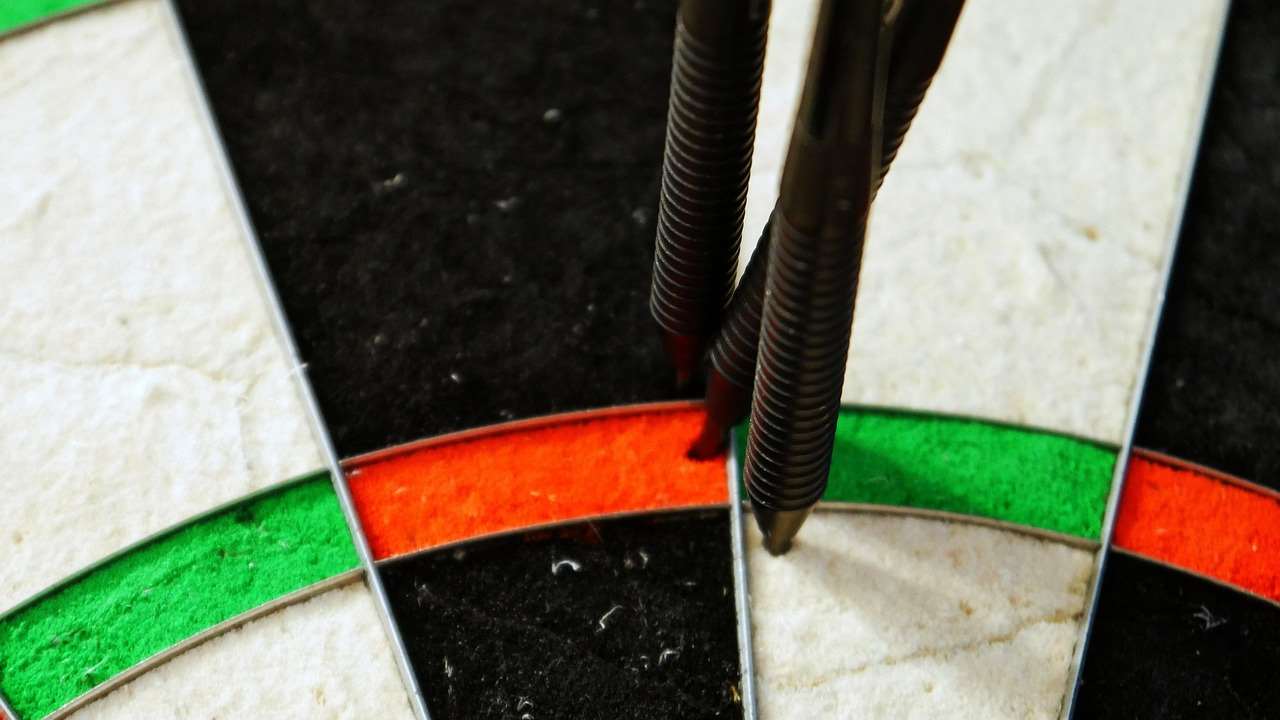Begrip what constitutes a throw in 501 darts is fundamental to playing the game correctly. A valid throw involves specific rules about the player’s stance, the release of the darts, and what happens when darts fall out; this article delves into these intricacies and more, ensuring you know the official guidelines for every throw.
⚠️ Still Using Pen & Paper (Of een schoolbord)?! ⚠️
Stap in de toekomst! De Dart Teller -app behandelt alle scoren, stelt kassa voor, en volgt uw statistieken automatisch. It's easier than you think!
Probeer de Smart Dart Teller -app gratis!Klaar voor een upgrade? Klik hierboven!
What Constitutes a Valid Throw in 501 Darts?
Dus, let’s break down what constitutes a throw in 501 darts. It’s more than just flinging a dart at the board! Several key elements define a valid throw, impacting your score and the integrity of the game. It’s also essential to understand the rules regarding dartboard etiquette to maintain fair play and respect for your opponent. We’ll explore each aspect, from the player’s stance to the final scoring.

The Throwing Stance and Oche
The first element of a valid throw is the player’s stance. A player must stand behind the oche (also known as the throw line). Here’s what you need to know:
- Foot Placement: At least one foot must be behind the oche when releasing the dart. Players often develop a preferred stance, but ensuring at least one foot is grounded behind the line is crucial. Some players prefer to stand directly behind the oche, while others angle their body slightly. The key is consistency.
- Leaning: You are allowed to lean over the oche, but your feet must remain behind it. It’s a common practice to gain a better vantage point, but remember to maintain balance.
- Breaching the Oche: If you step over the oche while throwing, the throw is invalid, and any score obtained from that throw won’t count. This is a common mistake, especially for beginners.
The Release of the Dart
The moment of release is also critical. Here’s what defines a valid release:
- Intentional Throw: The dart must be intentionally thrown towards the dartboard. Any accidental dropping of the dart doesn’t count as a throw.
- Number of Darts: In 501, a player throws three darts per visit to the oche, unless they finish the game with fewer darts.
Mastering your throw is essential. Consider practicing your dart throwing technique to improve your accuracy and consistency.

Scoring and What Happens After the Throw
After the darts are thrown, the scoring process and the rules surrounding darts that fall out of the board come into play. The principles are the same even when Simplified 501 game rules for novice players are in use. These elements are also crucial in determining the validity of a throw.
Scoring a Throw
The score of a throw is determined by where the dart lands on the dartboard. Here’s a breakdown:
- Valid Scoring Zones: Only darts that land within the numbered sections, the double ring, the treble ring, or the bullseye count towards the score.
- Dart in the Board: To score, the dart must remain in the board until the player retrieves their darts. If a dart bounces out before the player retrieves it, it does not count.
- Calculating the Score: The scorer, or the players themselves in a casual game, calculates the total score for the three darts thrown. This score is then subtracted from the player’s remaining score in 501.
Darts Falling Out of the Board
One common scenario that raises questions is what happens when a dart falls out of the board. Here are the rules:
- Before Retrieval: If a dart falls out of the board before the player retrieves their darts, it does not score, regardless of where it initially landed. This rule emphasizes the importance of a secure dartboard and properly maintained darts.
- Dartboardconditie: The condition of the dartboard is crucial. A worn-out board with loose fibers can cause darts to fall out more easily. Regular maintenance can prevent this issue.
- Dart Condition: The condition of your darts also matters. Bent or damaged points can cause darts to bounce out more frequently. Keep your darts in good condition for optimal performance.
Even with the best technique, sometimes darts just don’t stick! It’s part of the game. Knowing the rules ensures fair play. Remember that mastering dartboard setup can also minimize bounce-outs and contribute to a better playing experience.

Fouls and Illegal Throws
Certain actions constitute fouls or illegal throws, invalidating the score. Understanding these is critical for fair play. Sometimes, modifying rules for mixed-level dart players can ease these rules. Here are a few common scenarios:
- Stepping Over the Oche: As mentioned earlier, stepping over the oche during the throw is a foul.
- Throwing Out of Turn: Throwing when it’s not your turn is also a foul. Ensure you are aware of the correct playing order.
- Interfering with an Opponent’s Throw: Any action that intentionally disrupts an opponent’s throw is considered a foul. Sportsmanship is key in darts.
Being aware of these fouls helps maintain the integrity of the game. It’s not just about hitting the target; it’s about adhering to the rules.

Equipment and Its Impact on a Throw
The equipment you use—darts and the dartboard—significantly impacts your throw and the overall game. From the weight of your darts to the condition of your board, every element matters.
Dart gewicht en balans
The weight and balance of your darts play a crucial role in your throwing accuracy. Players often experiment with different weights and materials to find what works best for them.
- Dart Weight Range: Darts typically range from 18 naar 30 grams. Lighter darts may require more force to throw accurately, while heavier darts can offer more stability.
- Dart Balance: The balance point of the dart affects its flight path. Some players prefer front-weighted darts, while others prefer those with a more even balance.
Finding the right dart for your throwing style can significantly improve your game. Don’t be afraid to try different types of darts until you find the perfect fit.
Dartboard Condition and Maintenance
The condition of your dartboard is equally important. A well-maintained board ensures that darts stick properly and that the scoring is accurate.
- Regular Rotation: Rotating your dartboard regularly helps distribute wear evenly, extending its lifespan.
- Removing Loose Fibers: Periodically remove any loose fibers from the board to prevent bounce-outs.
- Humidity Control: Keep your dartboard in a dry environment to prevent warping or damage.
A well-maintained dartboard not only improves your playing experience but also ensures fair scoring. If you have adapted darts rules for small spaces, the dartboard size is likely unaffected, so these maintenance practices remain essential.
Common Questions About Valid Throws
Many players, especially beginners, have questions about specific situations. Here are some common queries and their answers:
- What if a dart lands on the wire? A dart that lands on the wire does not score.
- What if a dart breaks after hitting the board? If the point of the dart remains in the board, the score counts. If it falls out immediately, it does not score.
- Can I use a different set of darts mid-game? Ja, you can switch darts between throws, but it’s generally advisable to stick with a consistent set.
Understanding these nuances can prevent confusion and ensure fair play during your games.

Practice Drills to Improve Your Throw
Consistent practice is essential for improving your dart game. Here are a few drills you can try:
- Target Practice: Focus on hitting specific targets, such as the double 20 or the bullseye.
- Consistency Drills: Throw multiple darts at the same target to improve your consistency.
- Checkout Practice: Practice finishing the game by hitting specific checkout combinations.
Regular practice, combined with a solid understanding of the rules, will undoubtedly enhance your dart-playing skills. Consider exploring Basic Darts Fundamentals for Beginners to establish a strong foundation.
Conclusie
Begrip what constitutes a throw in 501 darts is paramount to playing the game accurately and fairly. From the stance and release to the scoring and equipment, every detail matters. Knowing the rules regarding valid throws, fouls, and equipment maintenance will improve your game and ensure a positive experience for everyone involved. Now that you know the rules, it’s time to practice! Head to the oche, refine your technique, and enjoy the game. For further improvement, research topics such as dart grips En dart trajectory. Ready to take your dart game to the next level? Sharpen your skills and challenge your friends to a match today!
Hoi, Ik ben Dieter, En ik heb Dartcounter gemaakt (Dartcounterapp.com). Mijn motivatie was geen darts -expert - helemaal tegenovergestelde! Toen ik voor het eerst begon te spelen, Ik hield van het spel, maar vond het moeilijk en afleidend om nauwkeurige scores te houden en statistieken te volgen.
Ik dacht dat ik niet de enige kon zijn die hiermee worstelde. Dus, Ik besloot om een oplossing te bouwen: een eenvoudig te gebruiken applicatie die iedereen, Ongeacht hun ervaringsniveau, zou kunnen gebruiken om moeiteloos te scoren.
Mijn doel voor Dartcounter was eenvoudig: Laat de app de nummers afhandelen - het scoren, de gemiddelden, de statistieken, Zelfs checkout suggesties - zodat spelers puur kunnen richten op hun worp en genieten van het spel. Het begon als een manier om het probleem van mijn eigen beginners op te lossen, En ik ben heel blij dat het is uitgegroeid tot een nuttig hulpmiddel voor de bredere darts -community.